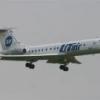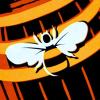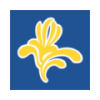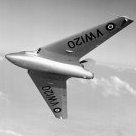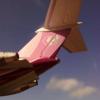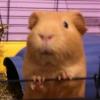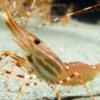Search the Community
Showing results for tags 'F-RSIN'.
-
Here is the F-RSIN Viscount 800 finished to represent G-BBVH of GB Airways in 1988. Viscount c/n 281 was built in 1957 as ZK-BRD of New Zealand National Airways Corp. In 1974 she was bought by British Airways, re-registered as G-BBVH and immediately leased to Gibraltar Airways who later bought her outright. In June 1988 the re-branded GB Airways painted her in their attractive new red white and blue livery complete with colour-matched props. Unfortunately less than six months later in November 1988 she aquaplaned off the runway into a ditch while landing at Tangier in heavy rain. Nobody was hurt but damage to the elderly aircraft was beyond economic repair and G-BBVH was broken up after spares recovery. As I said when I posted my Alitalia 785D last year, F-RSIN’s Viscounts are among their best kits and an easy build within the limits of short-run moulding. I like them so much that I have finished three to date, a second 800 is currently in primer and another 700 is at the planning stage. The only accuracy issue I have identified is that the bulged nacelles are a little too bulged but I can live with that. The most difficult part of the build was getting all four engines properly lined up. These fit the wings where they touch and a fair bit of packing, checking. re-packing, re-checking and so on was needed. The panel lines are better on the 800 fuselage than the 700 but that’s not saying much and once again I filled them. Aeroclub metal props replaced the unusable F-RSIN ones. Paint is Halfords Appliance Gloss White and AK Interactive Aluminium. Decals are by Classic Airlines. Nick has missed the aircraft name “Yogibair” (yes, seriously) so I made up my own tiny decal using the closest font I could find on Apple Pages. It’s not 100% accurate but it’s better than nothing. Thanks for looking and constructive criticism is always welcome. Dave G A trio of F-RSIN Viscounts - Cambrian/BOAC early 700, Alitalia 785D and GB Airways 800
- 25 replies
-
- 67
-

-
- F-RSIN
- Vickers Viscount
-
(and 1 more)
Tagged with:
-
My next build (which again was part of a French group build project) is the F-RSIN 1:144 SNCASE SE.2010 Armagnac in the colors of Transports Aeriens Intercontinentaux (TAI). “Le Giant Oublie” Please raise your hand if you have heard of this device before. No one....? Oh, well, that's not surprising, since there is a reason this aircraft is nicknamed "The Forgotten Giant" Despite the difficulties France found itself in during the German occupation during WWII, the design of civil and military aircraft continued fairly uninterrupted. Design work on the Armagnac did not begin in earnest until 1945, when Société Nationale de Constructions Aéronautiques de Sud-Est (SNCASE) was selected as the prime contractor for the SE.2000. It was intended that the aircraft would be suitable for North Atlantic flights with a cruising altitude of 4000m powered by four 2100-hp Gnome-Rhône 18R engines. However, it was soon realized that the wartime design was outdated, so the concept was scaled up to a pressurized cabin for 64 passengers for transatlantic flights and 107 for shorter routes. A bigger aircraft was clearly too much to ask for the Gnome-Rhône 18R engines, so the SE.2010 Armagnac would be powered by four 3500-hp Pratt & Whitney R-4360 Wasp Majors. In this form, the SE.2010 Armagnac first flew on 2 April 1949 and production of 15 definitive Armagnacs (eight for Air France) was started. Source: Wikimedia Commons However, by this time sleeper aircraft with bunk beds had begun to fall out of favour, and Air France felt that without this option the aircraft would become very large and canceled the order. Despite this, SNCASE decided to continue production and built nine aircraft, the first four for TAI. The Armagnac was taken into service on December 8, 1952, but it soon became clear that the aircraft was not very economical. The four aircraft were returned to SNCASE and stored in Toulouse. Nevertheless, the aircraft still got a chance when the outbreak of the Indo-China war created a need for more capacity for flights to France. Seven aircraft were therefore assigned to Société Auxiliaire de Gerence et de Transports Aériens (SAGETA) for flights between Toulouse and Saigon via Beirut, Karachi and Calcutta. Source: Wikimedia Commons A maximum of 160 passengers could be transported with a crew of five. In total, only nine were built and the aircraft served until 1959. The resin kit is from F-RSIN and is actually very nice. Decals are also from F-RSIN, but the cockpit and passenger windows are made by me. For the wire antennae I use AK rigging for the first time (instead of one of my girlfriend’s hair) and I have to say that it works great and I will use this for future projects as well. The display bases are also made by me. Anyway the pictures: All in all this was a great and accurate kit to build. Shame that Laurent from F-RSIN has decided to discontinued it. Thanks for reading and see you next time!
-
Hello fellow modellers, I would like to show you this model of a rare aircraft. Air France used four converted military C-160s for postal flights from 1973 to 1978 between Bastia (Corse) and Paris. The service was very reliable. Some sources say, they were called C-160F, others say C-160P. The kit is a full resin kit by french manufacturer F-RSIN and was ....well,... a challenge. The wings were drooped at the end and bent. Treatment with warm water and hot air did not help at all. So I sawed off the outer wings, corrected the angle and glued them back on again. Not perfect, but much better than before Otherwise the Transall would have looked like an Antonov An-12 with its typical hanging down wing tips. The decals were very sensitive, so some repairs were necessary. All the walkway markings were not included, so I made them using black decal stripes. Some antennas and pitot tubes were also adde. The air intake in the right sponson was way too big and located at he wrong place, so I filled the hole and drilled a new one. Would I build another one? Guess! Well I got another one in my stash in German Air Force markings. (Should I sell or should I build? The Clash) Enjoy the photos. Greetings from Germany, Norbert . Size comparison to An-12
- 8 replies
-
- 42
-

-
- 1:144
- Civil aviation
-
(and 1 more)
Tagged with:
-
Here is F-RSIN’s Viscount 700 finished as I-LIFT of Alitalia circa 1959 before application of the “flag tail”. I-LIFT was built in 1957 and delivered to LAI which merged with Alitalia a few months later. She stayed with Alitalia until withdrawn in 1969. She was broken up in 1971 after spares recovery. F-RSIN’s Viscounts are among their best kits although as always with short run mouldings the end result depends on the amount of work the modeller is prepared to do. The 700 gives a choice of radar or non-radar noses and straight or bulged engine nacelles. The bulged nacelles (necessary for the V.785D) are a little too bulged but I didn’t fancy trying to sand them down and get all four identical so I decided to live with the minor inaccuracy. The panel lines on the fuselage are very poor. I gave up trying to fix them and just filled them in. The props are supplied as separate hubs and blades. They are unusable and I replaced them with a set of Aeroclub metal props salvaged from a deceased S&M model. Paint is Halfords Appliance Gloss White and some original Humbrol Metalcote exhumed during an audit of my paint stash. Original Metalcote was a good product and having found it I decided I might as well use it. Despite being about twenty years old it performed pretty well but it did show how paint technology has moved on and I ended up wishing I had stuck to my usual AK Interactive. The kit came with Alitalia decals but these are inaccurate around the nose. They also include the door outlines which were only carried at the very end of the Viscount’s Alitalia service. I used the Classic Airlines sheet instead. The cheatlines went on beautifully but the “flag tail” fin decal was obviously designed for another kit and nothing I did would make it fit. The F-RSIN tail decal wasn’t a lot better and eventually I decided to swap to the original livery. I made up small Italian flags from spare decal and sourced registrations from the spares box. I don’t think the “Servizio Postale” logo was carried on the earlier livery but I had applied the cheatlines before I found the problem with the fin decal so it stays the way it is! I also used some items from the very handy 26 Viscount details sheet. Thanks for looking and as always constructive criticism is welcome. Dave G
- 21 replies
-
- 55
-

-
- F-RSIN
- Vickers Viscount
-
(and 1 more)
Tagged with:
-
Finally completed my last model of 2021. This one is thanks to John Maxwell, a fellow club member who asked for this 1/144 F-RSIN kit to be completed for a friend of his & also thanks to Norman for creating a very nice base for it. Completely out of the box. The kit was slightly short shot in some places. The wings didn't have straight edges so I had to use my spruegoo mix to correct some badly moulded parts. I say badly, but the kit is a short run kit, so expect imperfections. The decal sheet included the blue sash that had printed panel lines for the doors, which didn't line up with the panel lines on the fuselage halves so I rescribed for just the fuselage & scribed a new cargo door at the front port side. Hataka for the light aircraft grey, Vallejo Metal colour & Vallejo white with a Klear cote. Thanks for looking. Martin
- 28 replies
-
- 44
-

-
This is my Finnair Super Caravelle in 1/144 scale. The model is a kitbashing build from F-RSIN and Welsh Models Caravelle kits plus numerous parts and decals from many other sources. It's maybe one of the most demanding and work intensive modelling projects that I have ever embarked upon. The elegant and sleek Caravelle is absolutely my favourite airliner and the Super Caravelle in Finnair's traditional scheme is the most elegant of all the Caravelle liveries used by the different airlines! I know that I might be biassed and looking through blue and white glasses but this is my honest opinion. Finnair was the first airline to receive the Sud S.E. Caravelle 10 B3 jets to their fleet in July 1964 and this plane type subsequently received the official name "Super Caravelle" The planes had among other features new and more powerful PW JT8D by-pass jet engines. Two of the clearest differences to the earlier Caravelles were the bigger new engines with oval or "pear" shaped air intakes and the lack of the long dorsal fin in front of the tailplane. Finnair operated a total of 10 Super Caravelles during 23 years and the last scheduled flight took place in April 1983. I had the possibility of taking some flights in these planes from Helsinki to London, Madrid and Eilat. I had bought the Welsh Models Super Caravelle kit with Finnair decals many years ago but I soon discovered too many flaws in the shape of the kit and I decided to put it to the shelf of forgotten kits. However, when I learnt some years ago that F-RSIN was going to launch the very same Super Caravelle in Finnair colours I decided to have another go. The F-RSIN kit was in fact surprisingly correct in shapes and measures in the larger parts like the fuselage, wings and stabs. As usual with limited run kits the smaller parts like the wheels and the landing gear were quite rugged. The Welsh Models kit on the other hand had good quality white metal wheels and landing gear. Thus, I decided to use the good parts, decals and other details of the two kits plus extra parts from various different sources so that the final outcome is really a mish-mash model. As to the decals, I used bits and pieces from the both kits. Morover, I had the light grey coloured brand names of Finnair, the door frames and the registration letters re-printed by a fellow modeller. They were erroneously blue in the F-RSIN decals. The cockpit and the cabin windows I ordered from Authentic Airliner decals. The plane that my model depicts is reg. OH-LSA named Helsinki (all the Finnair Super Caravelles had a name of a Finnish town). Assembling the kit wasn't overly difficult. The F-RSIN parts needed a lot of sanding, fixing and puttying but that was to be expected. Mating the Welsh Models parts with the F-RSIN ones was actually quite straightforward. I finished the model by painting it with Revell 04 gloss white and Xtreme Metal Aluminium. The pointed fairing of the rudder and the patches here and there were painted with Lifecolor matt dark blue LC10. Luckily enough the shade of the paint was exactly the same blue shade of the decals. In the end I coated the model with Humbrol gloss varnish. A post card of the newly inaugurated Helsinki Airport Terminal circa 1970. In the front Super Caravelle OH-LSB "Tampere" A picture of the cockpit of OH-LSE en route from Helsinki to Madrid in 1977 (sorry for the unclean picture)
-
Here's my 1/144 F-RSIN Plastic Britannia built as Britannia 312F XX367 of the A&AEE using 26 Decals, which I've just finished in the Bristol Aeroplane Company group build. Build thread is here. This kit had been sitting in a not-often-visited corner of the stash for a few years, and I hadn't really been planning on building it. My Dad had given it to me for Christmas, and I hadn't been in a hurry to build it - it's not exactly a beautifully moulded kit! But Dad passed away on 3 July and, with the Bristol group build going on at the time, it seemed like the right kit to build. Dad would have liked me to use the BOAC decals that were included in the kit, and that was the plan until they turned out to be pretty terrible decals, which prompted a hasty repaint to allow me to use these 26 Decals that I'd had in the stash for a while. Built OOB, the kit is fairly crude but builds up into a nice enough representation of the Britannia. With a bit more time and effort I think it could be built into a good model. But I think I'll use the Roden kit next time! thanks for looking Julian
- 19 replies
-
- 47
-

-

-
Finnair and Flybe had a joint operation for Nordic area's regional traffic from 2011 to 2015. Their fleet in Flybe's livery consisted of several ATR 72-500 turboprops. After the co-operation ceased Finnair have continued to use the planes under the brand name of "Norra". As to Flybe, they filed for bankruptcy in May, 2020 but I've heard rumours that they will return to the skies later on this year financed by the investment fund Cyrus Capital. However, I don't know whether it's true. My model was a very tough kitbashing project mating the longer fuselage and wings of F-RSIN's ATR-72 kit with Italeri ATR-42's engines, propellers, landing gears and wheels. The decals for the plane I ordered from 26Decals. There was lots of puttying and sanding to be done and at some point I got so tired of the job that I almost threw the whole thing to the bin. Finally I made it and the outcome could be worse. Had I, however known how difficult the project was going to be I probably would have skipped it and decided to wait for a new ATR 72-500 kit. I primed the whole plane with Mr. Surfacer 1000. For the white areas I used Tamiya Fine Surface primer which I then varnished with Tamiya clear gloss TS-13. The underside of the Flybe livery is blue and in my eyes the closest shade was Revell enamel paint nr. 50. I also scratched quite a lot of details to the model and used Vallejo acrylics and Humbrol/Revell enamels for the smaller parts.
-
I have always liked the Convair 990 Coronado. The big anti-shock bodies in the wings and the long dorsal fin containing avionics gave the Coronado its typical and original looks. In the 1970's I flew a couple of times with the plane in Spantax's colours to the Canary Islands. The flight time was considerably shorter than with other airliners. Coronado was and I understand still is the fastest subsonic jet airliner of the world with a maximum speed of 1000 km/h I built the CV-990 in Swissair's livery from the excellent Authentic Airliners 1/144 resin kit. I ordered the decals from F-RSIN. IMHO this combination is very elegant. As to the modelling of the plane there were no problems and the smaller parts, especially the landing gears were very detailed. I painted the white areas with Tamiya fine surface primer which I then sprayed with Tamiya gloss varnish TS-13. The metal areas I primed with Tamiya gloss black TS-14 and sprayed with Vallejo metal colour-aluminium shade.
-
Unusually for me I planned my years intended builds by looking at the Britmodeller group builds for the 2021 and worked out which ones I wanted to join. So here is my second non injection GB entry - a F-RSIN resin kit of the lovely post war Languedoc airliner in Air France colours. My plan hopefully coming together later in the year with another 144 airliner for the French Fancy GB, again in Air France colours. So here we have it - simple looking kit with minimal number of parts Box and decals Fuselage and winds - two pieces - bonus! # And lastly white metal props, brass tube undercarriage and resin tail plane. The fuselage and wings are fine smooth resin and hopefully I will add some subtle panel lines to add interest. Done no real research yet but hoping to put this recently acquired kit together quickly and test out the new airbrush on the all important paint scheme - all silver, so preparation is everything! Cheers JP
-
This kit was a bit of an uphill struggle to be honest, largely due to the rough surface texture and some alignment issues. It's by F-RSIN and is injection-moulded rather than resin. It was worth the battle though, just because it's such a cool subject.
- 31 replies
-
- 45
-

-
F-RSIN is to release in November 2019 1/144th Canadair CL-44 kits Source: http://www.f-rsin.com/pages/collection/CL-44.html Parts - Kits contain one fuselage only: CL-44, CL-44J or CL-44 Guppy - ref. FRP4119 - CL-44 - Seaboard World - ref. FRP4120 - CL-44 - BOAC - ref. FRP4121 - CL-44 - Flying Tigers - ref. FRP4122 - CL-44 - Transvalair - ref. FRP4123 - CL-44J - Loftleiðir - ref. FRP4124 - CL-44J - Aer Turas - ref. FRP4125 - CL-44 Guppy - Heavy Lift V.P.
-
Hello, I recently acquired an Italeri ATR-42 and I already an F-RSIN kit under construction. I know of all the criticism on the Italeri kit but I wanted to give it a try.. On comparing the parts though I found out a huge difference in the cabin section (not mentioning the wonky nose shape). I'm now just curious to know who is right: unfortunately all I could find searching around are INTERNAL cabin dimensions, which are very useful to sell the product but not so interesting for us modellers. Anyone would happen to know the fuselage external height and width of the ATR series?
-
I see that F-RSIN Plastic are releasing 1/144th scale kits of the Fokker F.28 at the forthcoming Telford show. Both the shorter fuselage 1000 and the longer 4000 in are shown in various schemes. I've always liked those little Fokkers, so I'm quite pleased. Question is, does the F.28 belong in the Classic or Modern section? Being as there are hardly any left in service, I chose classic even though it still seems fairly new to me. Dave
-
I bought this kit last year intending to build it in the De Havilland GB but.............. Not too many parts, though a couple of the smaller ones have disappeared from the sprue before it got into the box The above pictures were taken about a week ago and I now have the fuselage together There's quite a bit of flash to remove (not really an issue) and as others have noted, the plastic is quite rough and prone to odd "lumps" here and there. Apart from the fact that two of the 3 castellated engine exhausts are missing, the main problem looks like the wings. These will need some careful sanding on the insides to get them to fit together.
-
My contribution to this group build will be the F-RSIN 1/144 Trident 3B, in British Airways colours. By the time these were built it was known as the Hawker Siddeley Trident, but it's a DH design and I'm told it qualifies, so here goes. Box and sprue photo to start with: There aren't a lot of parts so it ought to be a quick build - however I think a lot of the effort in this build is going to be in cleaning up the parts. There's a lot of flash, the plastic all has a very rough surface, and there are some pretty big moulding flaws such as these strange craters on the surface of one wing: So I think I'll be getting through some filler on this build! Apparently the kit's shape is pretty good, and I've seen some good builds online (including on Britmodeller), the one thing that people seem to consistently want to deal with is the shape of the centre engine inlet - it's a bit pinched and looks a bit triangular. So this is where I've started - I've built up the shape of the inlet with plasticard, and filed out the inside (which you can't see here) to get a better shape. It'll need some blending in with filler, which I'll do when the fuselage is together.
- 12 replies
-
- 1
-

-
- F-RSIN
- Trident 3B
-
(and 1 more)
Tagged with:
-
Evening all, I have too many projects on the go filling my workbench. They get finished in between the 'big' projects so here is the latest. The recent F-Rsin injection moulded ATR-72 in Aurigny markings (pronounced Aw-reeny when they call the flight at the airport!). This very aircraft G-BXTN took the Viking family from Manchester to Guernsey for a holiday back in 2006, so when I saw the model I had to have one. Nice little kit goes together very well for a limited run model, a bit of flash, heavy sprue gates, you know the sort of thing. Nothing very difficult though. The decals sre superb but are very thin and will fold over if you are not careful. I managed ok though. My biggest worry was doing that sprayed yellow 'fade' into the white, but it was a doddle with the airbrush, no trouble at all and yet it had scared me right up until the moment I had to start spraying. The puffin on the tail is a separate laser printed decal, and has a white underlay for it. I think it could have done with a little more white though, because it still looks a touch too dark to me. Never mind, I'm pleased with this one. With my other ATR-72 'Caribbean' I built for a friend; Cheers John
- 36 replies
-
- 16
-

-
French kit of the French subject. What can be more French? This is short-run. Undoubtedly
-
The generous response to my Lao Central SSJ-100 has encouraged me to post another RFI, this time the F-RSIN Trident 3B. I usually have five or six builds at different stages but for some reason I tend to finish them in pairs. The Trident was the other half of the pair with the SSJ. I used the plastic version of the kit which went together well. F-RSIN have really caught the character of the aircraft, particularly the kink in the wing and the various lumps and bumps underneath. The only accuracy point I picked up was the shape of the centre intake which was too sharply triangular compared to photographs. Plastic strip, superglue and Milliput plus a few minutes of carving and filing took care of that. To my eyes the cabin window decals look slightly too big but unless you take the expensive option of sacrificing a TwoSix sheet there really isn’t a suitable replacement. I sourced alternative “British” titles to align better with the windows but I'm still not 100% happy. They came from an old Flightpath sheet intended (I think) for a Tristar. The registration had to be G-AWZJ on which I had my one and only Trident flight (GLA-LHR) shortly before she retired in 1985. It’s also the only time I’ve flown in a rear-facing seat, a strange experience rather like being on an airborne train. Since I’d never previously been on a Trident I was unfamiliar with the aircraft’s idiosyncrasies and I still remember getting slightly concerned by the length of the take-off run at Glasgow and the looming possibility of a very large splash in the Black Cart Water. Needless to say Zulu Juliet unstuck in her own good time and the rest of the short flight was great. Happy memories! Thanks for looking and as always constructive criticism is welcome. http://SAM_0127 by David Griffiths, on Flickr http://SAM_0130 by David Griffiths, on Flickr http://SAM_0122 by David Griffiths, on Flickr http://SAM_0124 by David Griffiths, on Flickr
- 37 replies
-
- 30
-

-
Trident 3B - CAAC 1:144 F-RSIN British European Airways, in the latter part of the 1960s saw the need for an aircraft capable of greater capacity and range than its existing fleet for the European and domestic routes. The Hawker Siddeley Trident 1 and 2 currently in operation were proving to be too small which ironically was the result of the same airlines insistence that the original design be reduced in size to meet their requirements only a few years earlier. Regarded as a stop-gap until the arrival of the wide body airbus expected in the early 70s, Boeings B727 and the Douglas DC-9 were carefully considered however the possibility that non-British built aircraft were to be used resulted in Hawker Siddeley putting forward designs to meet the new requirement. Initially twin engine designs were submitted which would be powered by the then new high-bypass engines currently under development. Eventually however, following assurances that the design and development costs would be met by the government, a stretched Trident was selected. The Trident 2E formed the basis of the new Trident 3B. With a total fuselage stretch of 165 split ahead of and behind the wing being the most obvious difference when compared to the earlier versions. The wingspan remained unchanged however, the outer wing panels were increased in chord to give a 32sq. ft. increase to the wing area. Larger span outboard flaps and the installation of the RB162-86 booster engine in the base of the fin ensured that the thrust and lift were sufficient to overcome the weight of the new design. The wing was further modified by a 2.5 degree sweep increase to allow the same rotation angle on tale-off as previous models even with the rear fuselage extension. The first Trident 3B was rolled out at Hatfield in November 1969 painted in what was the then new BEA Speedjack colour scheme and was test flown on December of that year by John Cunningham. A total of 26 Trident 3B-101s were built and all delivered to BEA/BA, although by 1986, with the introduction of new noise regulations, all were withdrawn from service. Two additional airframes were built as the Trident 3B-104. Dubbed Super Tridents, the two examples featured additional fuel tanks for long range operations by the Civil Aviation Administration of China (CAAC) and were registered as B-268 and B-270, and these provide the modeller with one of the more obscure options to the Trident range currently available from F-RSIN The Kit The kit arrives in a large flat box of the end-opening variety, with a profile of the aircraft on the front. As is fairly standard for most of the F-RSIN range of kits, the parts are all contained within a single sprue that is moulded in pale grey plastic. A large decal sheet and a single page instruction sheet are also included, the latter providing an exploded diagram of the kit to guide the builder. The parts are attached by fairly large sprue gates and will be better separated by razor saw, to prevent damage to some of the smaller items during removal and the slightly textured finish to the larger components will require some light sanding prior to assembly. Both are common features of short-run kits and require little work to remedy, as are the ejector pin marks on the mating surfaces, although a few have pushed through onto the wing outer surface. Very little work will be required to eradicate these and a little sanding will render them flush with the surrounding plastic. There is a little flash around the majority of the smaller parts, which is again a feature of short-run moulding, and easily removed. The panel lines are provided for the main control surfaces and door outlines which provides adequate detail on a model of this type and scale. If however, you feel the need to add some more you will need to study your references, but in 1:144 they would be very fine indeed and hardly visible from scale distance. Breakdown of parts is straight forward as you would expect, with a vertically split fuselage, into which you are advised to place 20g of nose weight to ensure all the wheels remain on the ground. The wings are moulded to achieve seams which coincide with prominent panel lines on the wing underside thereby avoiding joint lines on the extreme trailing edges which are commendably sharp. Separate wing fences are included, which fit into well-defined recesses in the upper wing surfaces. On the sprues, the wings appear to have the correct change in dihedral from the inner to the outer sections, but a proper conclusion can only be drawn once the parts are removed from the sprues and fitted to the fuselage. It is possible that the trailing edges of the lower wing parts will need thinning to ensure a flush joint with the underside leading edge of the ailerons and flaps. The T-tail has been moulded in similar fashion with the lower surface stopping at the hinge-line and which will result in minimal surface clean up, but you will need to thin the trailing edge of the lower part to get a good flush joint before applying glue, in much the same way as the wings. A nose gear bay is provided to fit behind the opening in the fuselage, but detail is limited, which is the norm for airliner models. The main bays in the wing are similarly blank, but are small due to the main doors being closed when the landing gear is deployed. The unusual landing gear arrangement of the Trident featuring four wheels mounted transversely on a single axle with two wheels either side of the main gear strut, and the offset twin wheel nose gear are well moulded, with separate retraction struts on the main legs. The open bay doors are all provided as separate parts, but youll need to check your references for the correct angles. The engines on either side of the rear fuselage are made up of horizontally split nacelles with fan detail to the front, separate exhaust nozzle and thrust reverser detail on the top and bottom just forward of the exhausts. The central Number 2 engine embedded in the tail has a separate intake lip, incorporating a short duct that extends within the fuselage. Slight adjustment will be required to reduce the triangular shape of the intake lip, which appears to be too narrow at the top as depicted. The booster engine is moulded into the base of the fin, just above the exhaust of the Number 2 engine, which has a separate nozzle part. There are no clear parts provided as both the flight deck and cabin windows are provided as decals. Markings The decals are provided on a single sheet with markings included for both of the Trident 3Bs that were supplied to the Chinese carrier. A continuous carrier film will require that each item is carefully cut from the sheet and trimmed closely to the individual designs in order to avoid excess carrier film. Registration, colour density and sharpness appear to be up to the usual standard we have come to expect from this manufacturer. Commendably, the decal sheet provides both styles of door outline and window arrangement within the full-length cheat line, with two different anti-glare panels to cover the differences between the two airframes. Both British delivery registration marks and Chinese wing and fuselage serial numbers are provided and additional detail such as thrust reverser grille and cockpit window decals are included to add a little realism. A pair of bright red Communist Chinese flags for either side of the fin help to brighten up an otherwise muted scheme. Conclusion For decades now, the only kit of the Trident in this scale has been the 1C by Airfix. Thankfully, F-RSIN have come to the rescue of airliner modellers wanting to build the later 3B variant of the Trident and are to be commended on the release of very good kit. Lets hope that they continue adding to their growing range of airliners which will fill the gaps in many of our collections and, regardless of the minor issues mentioned above, I would recommend this kit to anyone wanting a Trident 3 in their fleet of classic airliners. Review sample courtesy of Laurent at F-RSIN Text courtesy of Stringbag
-
1/144 Bristol Britannia, F-RSIN British Eagle This is another 'nostalgia build' of my memories of Heathrow in the 1960's. I remember seeing these as a kid, looking lovely on the ramp. British Eagle used them on a trooping flight contract to Germany, so anf ex Army guys might well remember them. They were also used on regular passenger flights and ranged far and wide. It was agreat shame when Eagle went out of business. This is the F-RSIN kit, a short run plastic injection moulding and one of the many great subjects they do. It is not a 'shake and bake' kit but builds up very nicely and without any real problems. I messed up one of the tail decals and emailed Laurent at F-RSIN who helped me out very quickly with superb customer service. His advice was to coat the decals with Microscale decal film, which i did and had no further problems. Hers she is a lovely kit, aircraft and colour scheme. I hope you like, Thanks for looking John
- 49 replies
-
- 30
-

-
I do like the flying boats. For my second entry into the group build, I will do the Latécoère 631 in 1/144, using a resin kit from F-RSIN. The Latécoère 631 first flew prior to the Second World War, with at least one example hidden in the French countryside to avoid German capture. The type remained in service until 1955. I think it's one of the most beautiful aircraft ever, right up there with the Constellation. You'll see it call the Late 631 as well, though calling your airliner a Late seems unwise, sort of like calling your car a Dodge. Latécoère is still in business, making door assemblies for Airbuses. The F-RSIN kit comes with markings for F-BDRC, lost in the South Atlantic in 1948, not far from where Air France 447 crashed 61 years later. Here's the box: Here are the few parts, including the massive solid-cast fuselage and the cast metal props: Here she is after very little effort in sticking the main parts together: Thanks for watching.
- 11 replies
-
- Latécoère 631
- Air France
-
(and 2 more)
Tagged with:

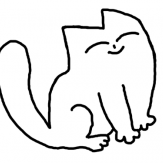
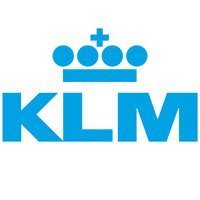
a.thumb.jpg.58d92d116b0315dc55d352fd191d65e4.jpg)
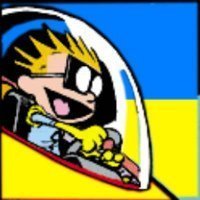
.thumb.jpg.d3635a7ef6507d35f372dd09671fe96f.jpg)

